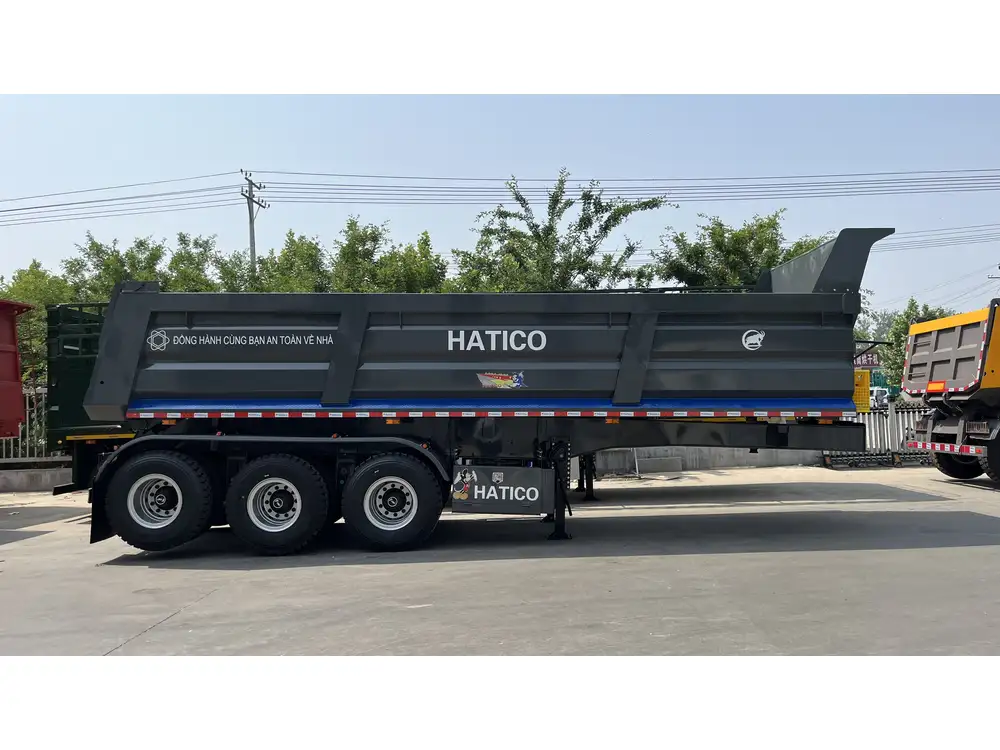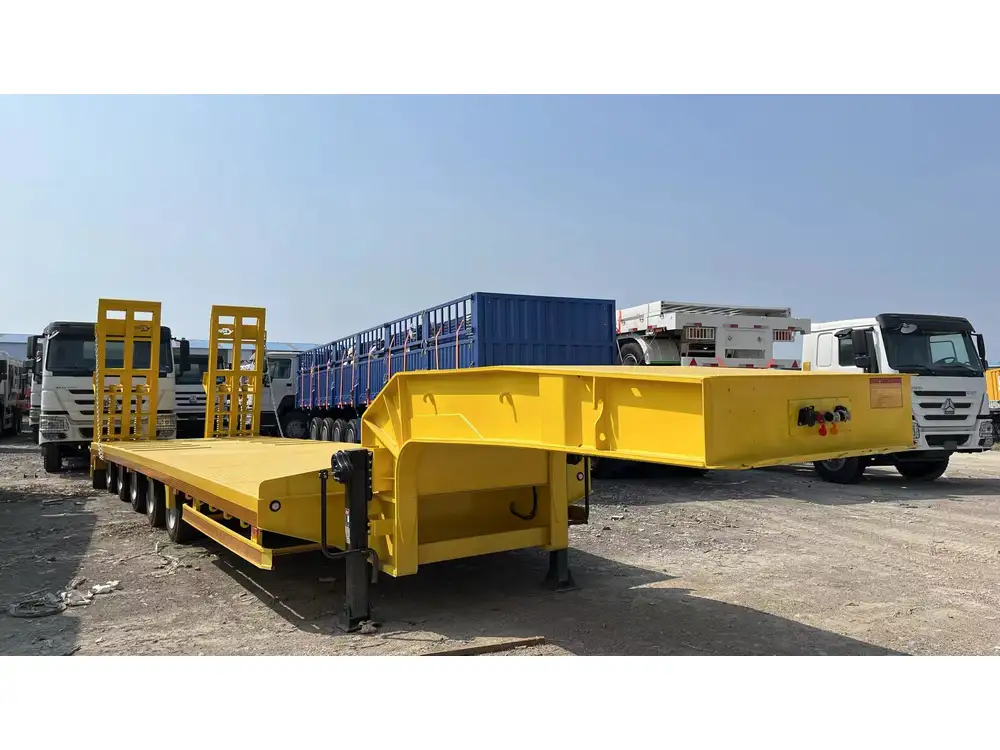In the world of transportation and logistics, flatbed trailers play a pivotal role, serving diverse industries with their flexible design and functionality. In this article, we delve deeply into what flatbed trailers are, their applications, types, advantages, and maintenance procedures to provide a holistic understanding pertinent to manufacturers, suppliers, and end-users.
What is a Flatbed Trailer?
A flatbed trailer is a type of freight trailer that offers an open, flat, and level surface without sides or a roof. This design is particularly advantageous for transporting large or bulky items that cannot be easily loaded onto traditional enclosed trailers. With a versatile layout, flatbed trailers can accommodate various cargo types, including machinery, construction materials, and vehicles.
Key Features of Flatbed Trailers
| Feature | Description |
|---|---|
| Open Design | Provides easy loading and unloading from any side or angle. |
| Versatility | Suitable for diverse cargo types, including oversized loads. |
| Durability | Constructed from high-strength materials to withstand heavy weights. |
| Customizable Options | Can be equipped with additional features like tarps, stake pockets, and chains. |
| Multiple Configuration Options | Available in different lengths, widths, and weight capacities. |

Types of Flatbed Trailers
Understanding the different types of flatbed trailers is crucial for selecting the right one for specific transport needs. Here are the primary categories:
1. Standard Flatbed Trailers
These are the most common flatbed trailers, utilized for general cargo transport. They typically come in lengths of 20 to 53 feet and can carry up to 48,000 pounds, depending on state regulations.
2. Step Deck Trailers
Step deck—or drop deck—trailers feature a lowered deck, enabling the transport of taller items without exceeding height restrictions. The two levels create a unique design that is beneficial for specific cargo types like construction equipment.

3. Extendable Flatbed Trailers
These trailers can extend their length to accommodate oversized loads. They are especially useful for transporting long items, such as piping or large machinery, making them popular within industries like construction and energy.
4. Double Drop Trailers
These are similar to step deck trailers but feature two drops, allowing for significantly taller cargo loads. The dual-drop design maximizes height clearance while ensuring the load remains stable and secure.
5. Lowboy Trailers
Lowboys are designed for transporting heavy equipment and machinery that require a lower center of gravity. The deck height is reduced, which helps to navigate under bridges and overpasses, making them a necessity for the construction industry.

Comparison Table of Flatbed Trailer Types
| Type | Ideal Use | Maximum Load Capacity | Deck Height |
|---|---|---|---|
| Standard Flatbed | General cargo | Up to 48,000 lbs | Varies by model |
| Step Deck | Oversized loads | Varies by model | Lower than standard |
| Extendable Flatbed | Extra-long cargo | Varies by model | Standard height |
| Double Drop | Tall equipment | Varies by configuration | Lower than standard |
| Lowboy | Heavy machinery | Up to 40,000 lbs | Very low (approx. 18 inches) |
Advantages of Using Flatbed Trailers
The benefits of employing flatbed trailers extend well beyond their simple design. Here are several key advantages:
- Flexibility in Loading: The open design allows for flexible loading options, making it easy to load from the sides, rear, or even the top using cranes or forklifts.
- Transport of Oversized Cargo: Many varieties accommodate large or high cargo that wouldn’t fit in standard enclosed trailers.
- Optimized Durability: Flatbed trailers are typically built with robust materials to withstand the rigors of heavy load transport, ensuring cargo safety.
- Cost-Effectiveness: The absence of walls or roofs reduces the weight of the trailer itself, allowing for a higher load capacity and improved fuel efficiency.
- Variety of Customization Options: Manufacturers can tailor flatbed trailers with features like winches and side rails to meet specific transport needs.
Common Uses of Flatbed Trailers
Flatbed trailers find application across various sectors, highlighting their versatility in the transport industry:

Construction Industry
Heavy construction equipment, lumber, and other construction materials often require the use of flatbed trailers due to their substantial size and weight. Their ability to support machinery like cranes and excavators makes them indispensable.
Agriculture
Farming supplies, such as large bales of hay, feed, and equipment, are frequently transported using flatbeds. Their open design allows for easy strapping or securing of goods, essential in the agricultural sector.
Automotive
Flatbed trailers are widely used for transporting vehicles, especially in non-operational condition. This includes classic cars, motorcycles, and other automotive equipment, where standard trailers may not suffice.

Energy Sector
The energy sector, especially oil and gas, often necessitates the movement of large and heavy equipment, including pipes and drilling rigs, making flatbed trailers a popular choice for hauling these industrial components.
Maintenance Tips for Flatbed Trailers
To ensure optimal performance and longevity of flatbed trailers, regular maintenance is paramount. Below are maintenance tips that can enhance the reliability and safety of flatbed trailers.
1. Regular Inspections
Conduct inspections at regular intervals to check for wear and tear. Focus on the following components:
- Tires: Monitor for proper inflation and tread wear.
- Brakes: Inspect brake pads and ensure brake lines are intact.
- Lights: Check that all lights function properly to avoid safety hazards.

2. Load Distribution
Ensure loads are evenly distributed to maintain trailer balance and prevent excessive wear on tires and suspension systems.
3. Clean and Protect
Regularly wash the trailer to remove dirt and debris. Apply protective coatings to fighting rust and corrosion, especially in regions prone to moisture exposure.
4. Lubrication
Keep moving parts well-lubricated to minimize friction and wear, extending the lifespan of the components.

5. Compliance Checks
Stay updated on local regulations regarding weight limits and safety standards, ensuring your flatbed trailer continues to comply with legal requirements.
Conclusion
Flatbed trailers stand as a testament to ingenuity in freight transport, providing unmatched flexibility and functionality across various industries. Their diverse types allow users to select the most suitable trailer based on specific transport needs, accommodating everything from construction equipment to oversized cargo. Through regular maintenance and proper use, flatbed trailers can serve efficiently for years, making them a wise choice for logistics professionals and manufacturers alike.
Understanding the intricacies of flatbed trailers is not just about recognizing their design; it involves comprehending the multitude of benefits they carry and the essential maintenance required to ensure their longevity. Whether you are a seasoned logistics operator or a budding entrepreneur in the transport industry, grasping the significance of flatbed trailers can steer your operations toward enhanced efficiency and reliability.



